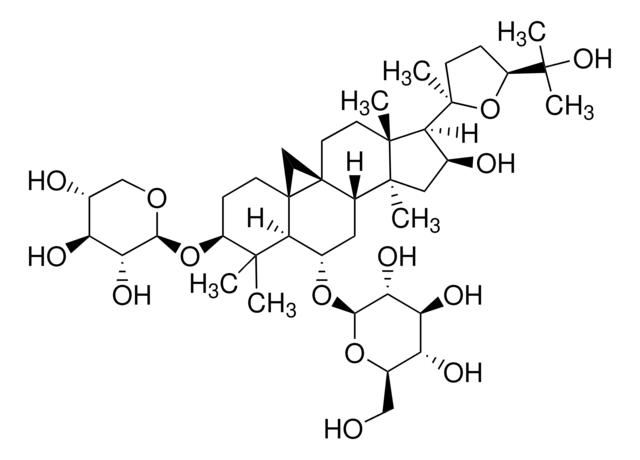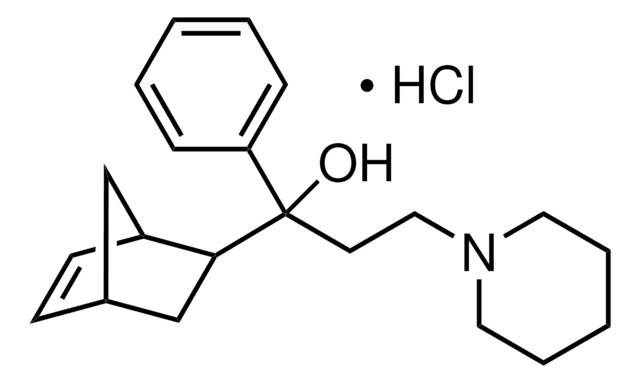SML0723
ML252
≥98% (HPLC)
Sinónimos:
(S)-2-Phenyl-N-(2-(pyrrolidin-1-yl)phenyl)butanamide
Iniciar sesiónpara Ver la Fijación de precios por contrato y de la organización
About This Item
Fórmula empírica (notación de Hill):
C20H24N2O
Número de CAS:
Peso molecular:
308.42
UNSPSC Code:
12352200
NACRES:
NA.77
Productos recomendados
assay
≥98% (HPLC)
form
powder
color
, light to dark purple
solubility
DMSO: 25 mg/mL, clear
storage temp.
2-8°C
Biochem/physiol Actions
ML252 is a potent, brain penetrant potassium channel Kv7.2 (KCNQ2) inhibitor with an IC50 of 69 nM. ML252 is only slightly selective over KCNQ3 and KCNQ4 but is over 40-fold selective for KCNQ2 vs KCNQ1, unlike other KCNQ inbhibitors currently used. ML252 was also selective vs. >68 tested GPCRs, ion channels, and transporters. Potassium channel Kv7.2 has become a new target for Alzheimer′s Disease drug research because inhibiting it enhances acetylcholine release. SAR studies showed a small structural change from ethyl group to hydrogen resulted in a functional shift from antagonist to agonist activity (37, EC50 of 170 nM), suggesting an interaction at a critical site for controlling KCNQ2 channel gating.
Storage Class
11 - Combustible Solids
wgk_germany
WGK 3
flash_point_f
Not applicable
flash_point_c
Not applicable
Certificados de análisis (COA)
Busque Certificados de análisis (COA) introduciendo el número de lote del producto. Los números de lote se encuentran en la etiqueta del producto después de las palabras «Lot» o «Batch»
¿Ya tiene este producto?
Encuentre la documentación para los productos que ha comprado recientemente en la Biblioteca de documentos.
Keyong Li et al.
Cell reports, 34(5), 108714-108714 (2021-02-04)
Brainstem networks that control regular tidal breathing depend on excitatory drive, including from tonically active, CO2/H+-sensitive neurons of the retrotrapezoid nucleus (RTN). Here, we examine intrinsic ionic mechanisms underlying the metronomic firing activity characteristic of RTN neurons. In mouse brainstem
Nuestro equipo de científicos tiene experiencia en todas las áreas de investigación: Ciencias de la vida, Ciencia de los materiales, Síntesis química, Cromatografía, Analítica y muchas otras.
Póngase en contacto con el Servicio técnico








